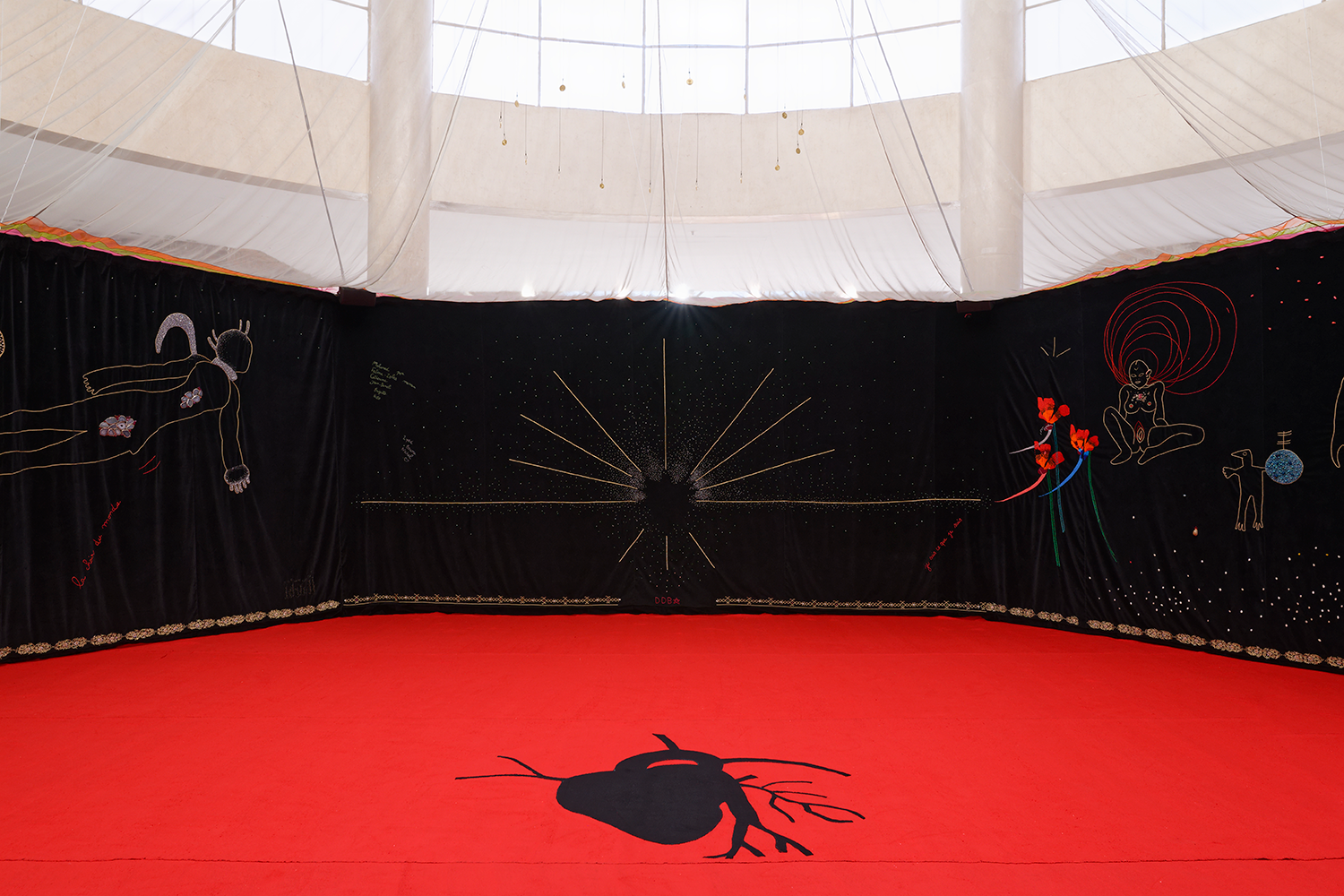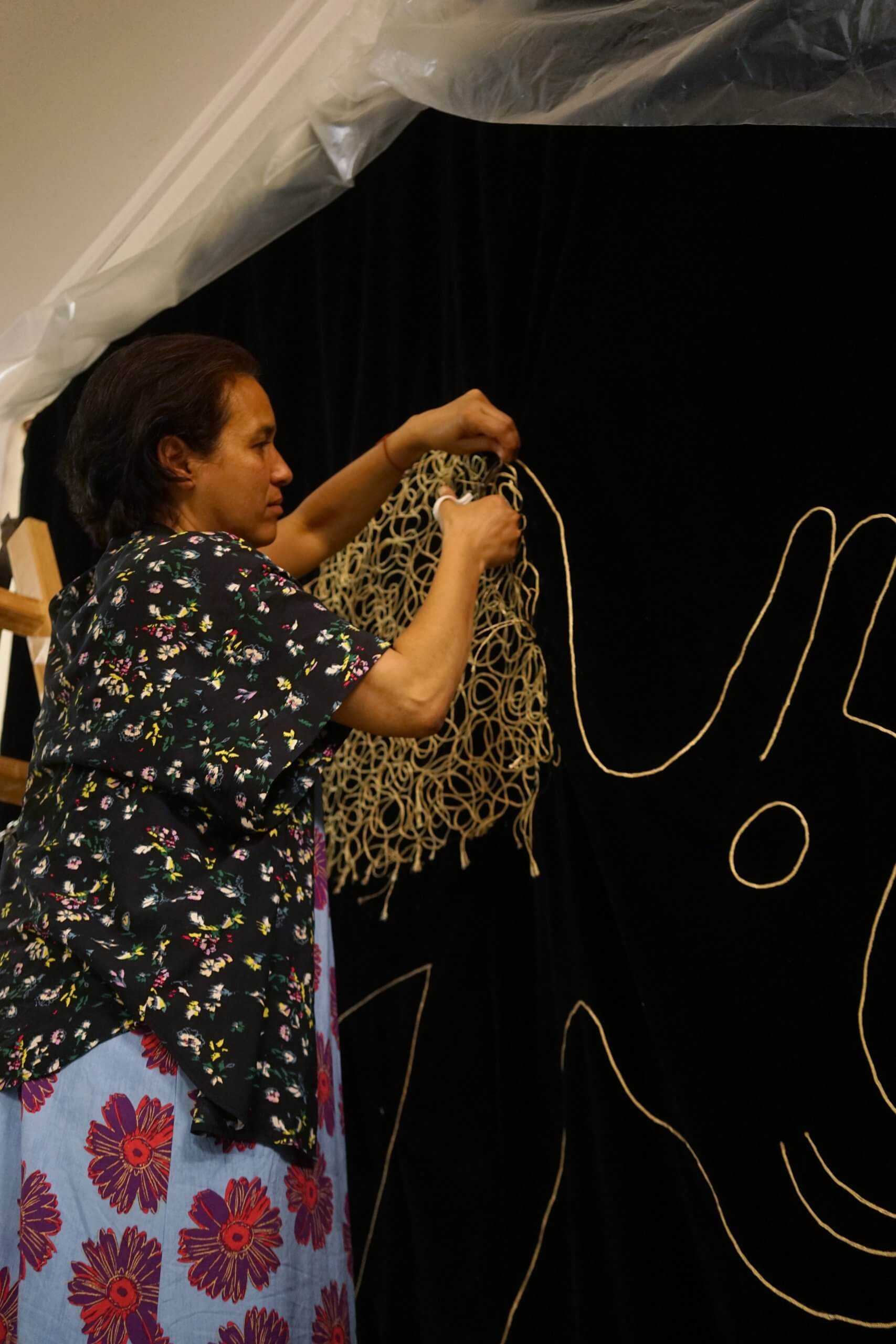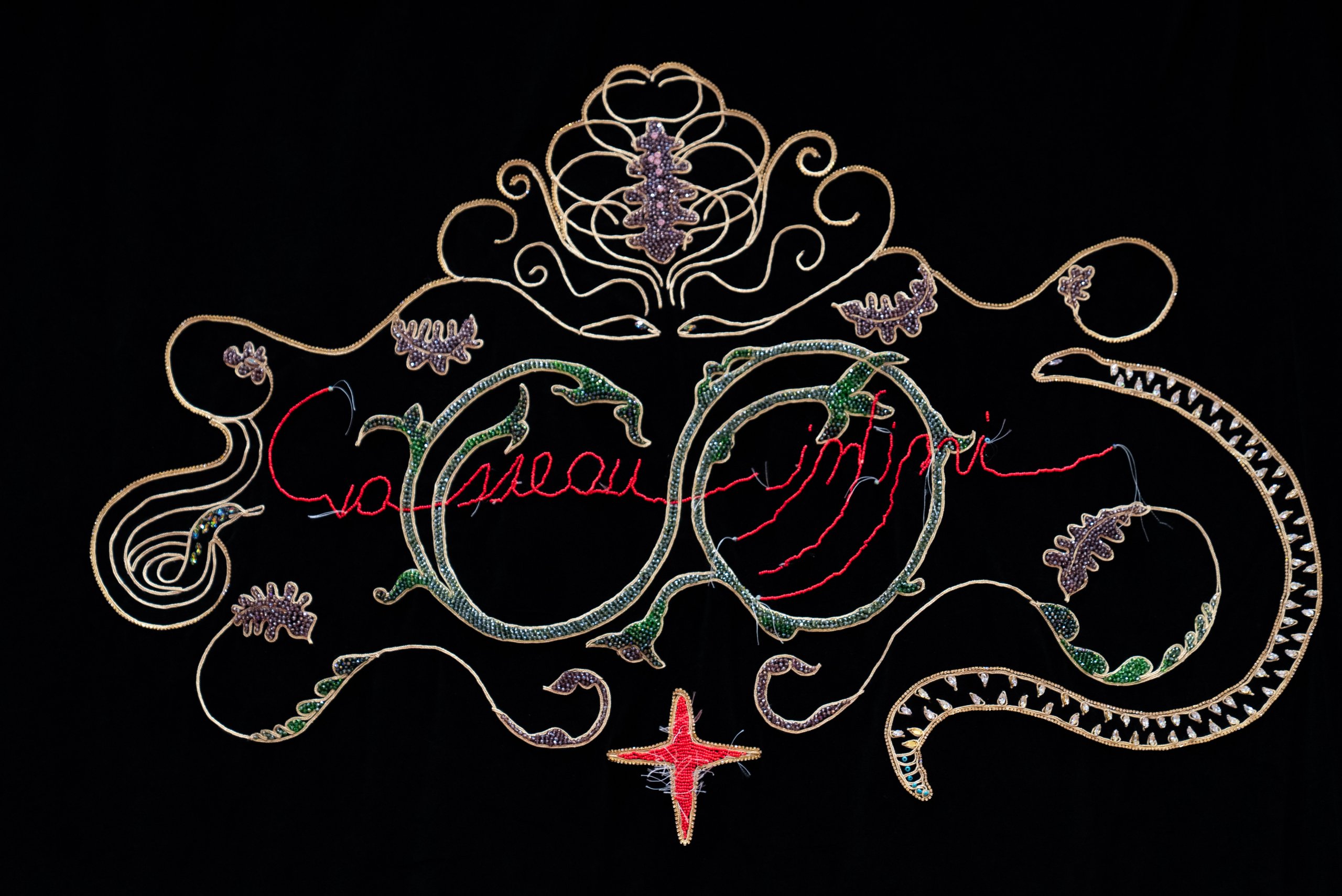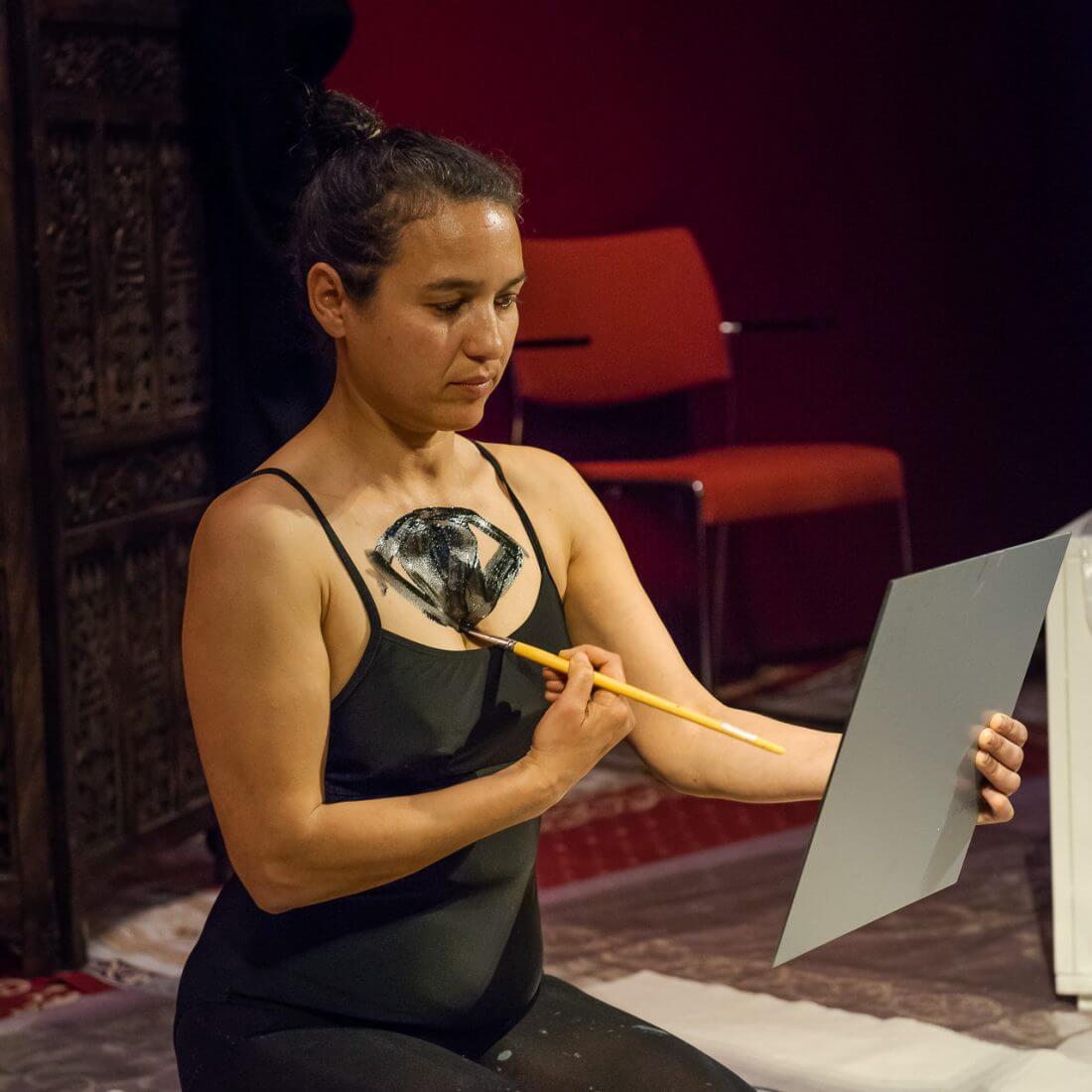SEARCH THE ENTIRE SITE
What do we learn from Tassili?
With this question, the exact one that the artist Dalila Dalléas Bouzar asked herself when going to the Sahara to meet millennia-old paintings and produce a personal and contemporary interpretation of them, the philosophers Arlette-Louise Ndakoze and Seloua Luste Boulbina exchange their perspectives on time and space, in dialogue with the artist.
Arlette-Louise Ndakoze looks at millennia-old African societies – including the philosophies that arise from the vital force – to question the drawings in the Tassili caves through the artist’s embroidery. Her starting point will be the notion of what the Rwandan philosopher Alexis Kagame understood as “vital traditions” by demarcating them from the notion of “history” in Western philosophies whose time axis follows an artificial linear trajectory. What is it that, from the movement of the artist Dalila Dalleas Bouzar, makes us grasp the life forms of the cave, what is it that opens the imagination inside and outside the perceived image of embroidery? The gap which separates the lives of yesteryear and today will be highlighted as a creative possibility from which contemporary forms are concretely taking shape.
According to Seloua Luste Boulbina, the desert is first and foremost, seen from here, a colonial political notion: a land without people that Europeans could therefore rightly occupy. But the desert is also geographical. The Sahara, for example, occupies a third of the African continent, from east to west. The Arabic term for Sahara, الصحراء, means desert. It designates a vast expanse of sand and rock, plains and mountains. From the inside, it is not an undifferentiated space but a set of places whose names are, for example, Hoggar, Tassili, Tibesti… Far from being uninhabited – the jinns reside there – it is one of the first populated areas in the world. The rock paintings are the trace. People, nomadic or sedentary, live there and have their own language: in Algeria, Tamahaq and Tamasheq. Since Antiquity, the Tuaregs have had a common writing style. Far from being a border separating “sub-Saharan” people from the inhabitants of northern Africa, the Sahara is, on the contrary, a gigantic traffic zone. For stops, a tent is essential (éhen in Tamahaq, khaïma in Arabic). The term also refers to the extended family (the tribe): depending on the rank, we are from a big tent, or from a small tent…
Tickets for this event provide access to the Palais exhibitions. The talk will be held within the ‘Vaisseau Infini’ exhibition by Dalila Dalléas Bouzar.
Speakers : Arlette-Louise Ndakoze, Seloua Luste Boulbina, Dalila Dalléas Bouzar and François Piron




